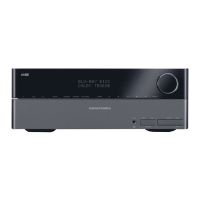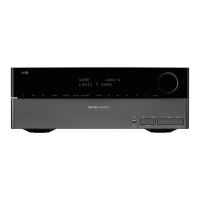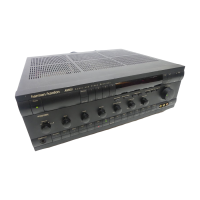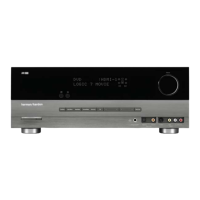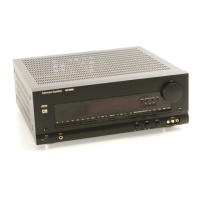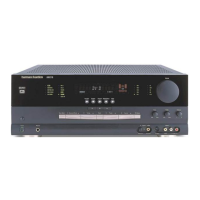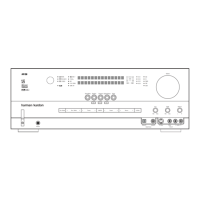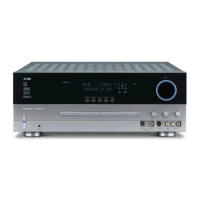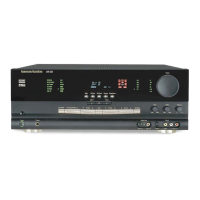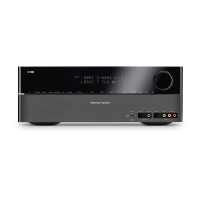CONNECTIONS
There are different types of audio and video connections used to connect
the receiver, the speakers, the video display, and the source devices. The
Consumer Electronics Association has established the CEA® color-coding
standard. See Table 1.
Table 1 – Connection Color Guide
Audio Connections
Front (FL/FR)
Left
White
Right
Red
Center (C) Green
Surround (SL/SR) Blue Gray
Surround Back (SBL/SBR) Brown Tan
Subwoofer (SUB) Purple
Digital Audio Connections
Coaxial Orange
Optical
Input
Output
Video Connections
Component Y Green Pb Blue Pr Red
Composite Yellow
S-Video
HDMI™ Connections
(digital audio/video)
HDMI
Figure 1
Speaker Connections
Speaker cables carry an amplified signal from the receiver’s speaker terminals
to each loudspeaker. They contain two wire conductors, or leads, inside plastic
insulation, that are differentiated in some way, such as with colors or stripes.
The differentiation preserves polarity, without which low-frequency
performance can suffer. Each speaker is connected to the receiver’s speaker-
output terminals using two wires, one positive (+) and one negative (–).
Always connect the positive terminal on the speaker, which is usually colored
red, to the positive terminal on the receiver, which is colored as indicated in
the Connection Color Guide above (Table 1). The negative terminals are both
black.
The AVR 460/AVR 360 uses binding-post speaker terminals that can accept
bare-wire cables.
Bare wire cables are installed as follows (see Figure 2):
Unscrew the terminal cap until the pass-through hole is revealed.
Insert the bare end of the wire into the hole.1.
Hand-tighten the cap until the wire is held snugly.2.
Figure 2 – Binding-Post Speaker Terminals With Bare Wires
Subwoofer
The subwoofer is dedicated to the low frequencies (bass), which require
more power. To obtain the best results, most speaker manufacturers offer
powered subwoofers that contain their own amplifier. Usually, a line-level
(nonamplified) connection is made from the receiver’s Subwoofer Output to a
corresponding jack on the subwoofer, as shown in Figure 3.
Although the purple subwoofer outputs look similar to full-range analog
audio jacks, they are filtered to allow only the low frequencies to pass. Don’t
connect these outputs to any other devices.
Preout Subwoofer
Figure 3 – Subwoofer
CONNECTING SOURCE DEVICES
TO THE AVR
Audio and video signals originate in “source devices,” including your Blu-ray
Disc or DVD player, CD player, DVR (digital video recorder) or other recorder,
tape deck, game console, cable or satellite television box, an iPod or iPhone
docked in The Bridge III docking station or an MP3 player. The AVR’s tuner also
counts as a source, even though no external connections are needed, other
than the FM and AM antennas.
Separate connections are required for the audio and video portions of the
signal, except for digital HDMI connections. The types of connections used
depend upon the capabilities of the source device and video display.
Audio Connections
There are two types of audio connections: digital and analog. Digital audio
signals are required for listening to sources encoded with digital surround
modes, such as Dolby Digital and DTS, or for noncompressed PCM digital
audio. There are three types of digital audio connections: HDMI, coaxial and
optical. Do not use more than one type of digital audio connection for each
source device. However, it’s okay to make both analog and digital audio
connections to the same source.
NOTE
: HDMI signals may carry both audio and video. If your video display
device has an HDMI input, make a single HDMI connection from each
source device to the AVR. Usually, a separate digital audio connection is not
required. Turn the volume on your television all the way down.
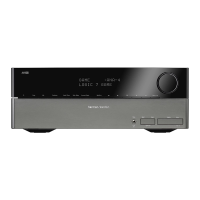
